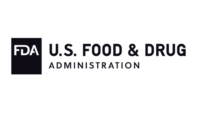Arsenic, Lead and Mercury: What’s FDA Doing About Metals in America’s Food Supply?

The U.S. Food and Drug Administration (FDA) is responsible for monitoring the levels of metals that are naturally present in our food supply via air, soil and water. Those metals include arsenic, cadmium, lead, mercury and others. These metals, despite their natural origins, can be toxic and particularly dangerous to children and their neurological development.
For this reason, the agency established the Toxic Elements Working Group in 2017. The workgroup is spearheaded by Conrad Choiniere, Ph.D., director of the Office of Analytics and Outreach at FDA’s Center for Food Safety and Applied Nutrition. As the workgroup closes in on 6 months of work, the FDA shared a Q&A with Dr. Choiniere on why this work regarding metal levels in our food supply is so important.
Q: What contaminants are we talking about?
The workgroup is focusing first on metals like lead, arsenic, cadmium, and mercury in foods, cosmetics, and dietary supplements. These naturally occurring contaminants are present in many of the foods we eat, but can be especially harmful to children because of concerns about effects on their neurological development. So we’re looking into the presence of these four metals in foods commonly consumed by children. We’re also concerned about the rest of the population, but our initial focus is on those who are the most vulnerable.
Q: Would you say more about how they get into our food supply?
Because these metals occur naturally in the environment, or have infiltrated water, air and soil because of pollution, they’re hard to get rid of or even just minimize. When these contaminants are in soil or water, they are absorbed into plants, which are then eaten by people or by animals that enter the food supply. This is what we observed with methylmercury, which came from pollutants that got into our water and from there into our seafood supply.
Q: If the elements have been around since the Earth took shape, why has this workgroup just been formed now?
This isn’t the first time the agency has taken a close look at the presence of these metals in our food. In recent years, FDA has provided advice to consumers related to eating seafood and infant rice cereals and proposed levels to industry for reducing arsenic in some of the foods consumed by infants and young children. After taking these actions, the agency committed to taking a more strategic, global approach -- looking at all the metals across all foods rather than one contaminant, one food at a time.
Q: Can you describe the work the group is doing?
Part of the work involves studying the large amount of data FDA has collected over the years. We have been collecting data on contaminants and nutrients in foods for decades as part of our Total Diet Study. We routinely sample products from across the country. We don’t target specific brands or stores but choose foods that are representative of the American diet. We have sampled hundreds of foods and tested them for nearly 400 contaminants, including the four metals, so we have a lot of data to work with. We also use data from other studies to understand how much of these foods people are eating and who specifically is eating them. Then we use all the information to determine how much of a contaminant may be getting into any person’s diet on an annual basis.
One thing that comes across when I look at the data is that there isn’t one single source we can point to that results in exposure to these metals. Even though the levels of a metal in any particular food is low, our overall exposure adds up because many of the foods we eat contain them in small amounts.
Q: What actions will follow all this data collecting and analyses?
Part of our mission is to use a risk-based approach to prioritizing and modernizing what we do about these contaminants. We are attempting to target our efforts based on levels of the different contaminants in foods and other products, the amount of the products consumed, and the population groups that consume them, to identify areas where we can have the greatest impact. We also have to consider the feasibility of any potential solution. For example, if we identify a food that may have relatively high levels of a heavy metal, we need to look into whether and how we can reduce those levels. Can they be reduced by changing how the food is grown or manufactured. Should we also be informing consumers about what they can do to protect themselves? Once we zero in on the problem, we can offer remedies.
In the short term, we are working on finalizing the draft guidance that sets an action-level for the presence of inorganic arsenic in infant rice cereals and apple juice. Also, we have taken note that the Centers for Disease Control and Prevention has lowered the acceptable level of lead in blood. That, in turn, has led us to begin reevaluating the specific lead levels that FDA has set for a variety of foods.
Q: Are these elements more dangerous now than for previous generations?
No. The metals themselves have not become more dangerous – but as science advances, we learn more about the effects they may have on our health. We develop better methods for detecting these metals, so we can detect them at much lower levels in foods than we could before. This doesn’t necessarily mean that there are more of these contaminants in our foods – just that we are better able to find them when we do our analyses. In fact, the data shows that the levels of some metals, like lead, have been in a general decline in the food supply. But now that we’re collecting more refined information, we can identify other areas in which we can further improve our efforts to reduce the level of these metals in foods.
Q: We’ve talked about kids, but what about the elderly and other populations? Is the workgroup looking out for them too?
Certainly, children are one of our most vulnerable populations, but we are concerned about the health of all populations, including older consumers and people who may have chronic health conditions. We chose children to focus on first because they have smaller body sizes and a slower metabolism than adults, which may make them more susceptible to the presence of these metals. Plus, these metals can have effects on children’s neurological development. Although we may be starting with young children, over time we will look at the effects on other populations. As an example, when reexamining the limits on lead, we may first identify levels that are appropriate for protecting children, but we’ll confirm that these levels are also appropriate for protecting people of all ages.
Q: Are there plans to engage the public in any way or allow stakeholders to give their thoughts?
Yes, we are exploring ways to get input from all of our stakeholders -- including consumers, industry, state and local partners, and other public health agencies -- on what they think we should consider about these issues. This affects everyone and we see this as a good opportunity to bring together stakeholders to gather as much data and input as possible to help our group make the best recommendations possible.
Q: What drives you to do this work?
I eat food, and I have children too. I’ve been working in public health for over 15 years; my wife worked in public health and was very passionate about this issue as well. Protecting kids and vulnerable populations is important to me and I’m fortunate to work with very dedicated people who feel the same way and who do their best to protect people and the food we eat.
For more information on metals in food, FDA has resources regarding arsenic, lead and metals in general.
Sign up for Food Safety Magazine’s bi-weekly emails!
Subscribe to our podcast: Food Safety Matters!
Looking for a reprint of this article?
From high-res PDFs to custom plaques, order your copy today!





